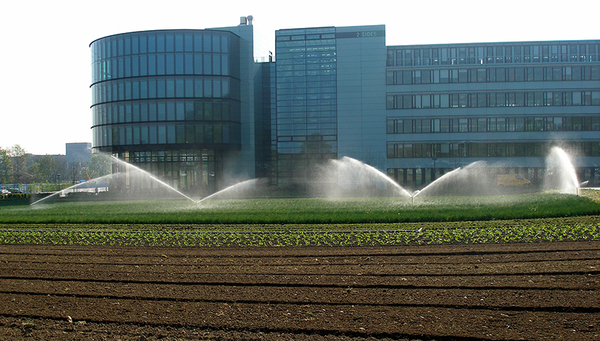News Detail
Reducing inputs of plant protection products into watercourses
May 2, 2018 |
Watercourses in catchment areas with a high level of agricultural use are often heavily polluted with plant protection products (PPPs) – especially small rivers and streams. When heavy rainfall occurs, the concentrations reach peak levels. The reason for this is that rainwater runs off the land surface and carries the PPPs from agricultural land with it into the watercourses. A number of potential measures exist for preventing such inputs of PPPs, and researchers from Agroscope, Eawag and the VSA Platform for Water Quality have been assessing these on the basis of a range of criteria.
Numerous processes involved
Water from precipitation runs over the topsoil when it is not able to seep into the ground quickly enough or if the ground is already saturated with water. When PPPs are dissolved in the surface water and thus transported, this is referred to as “run-off”; however, when they are attached to particles and carried away, this is understood as erosion. It is not possible to completely prevent either of these two processes on sloping land, but they can be significantly reduced through the implementation of specific measures. But how effective are these measures in reality? The researchers gathered together a whole raft of measures from the existing literature and evaluated these in terms of how high their potential for reducing PPP inputs across the whole of Switzerland is, how practicable they are in reality, and how well they are received by landowners.
Effective measures exist
The researchers identified as particularly effective those measures which enable the precipitation water to seep into the ground as fully as possible. These include minimal tilling, not too finely prepared seedbeds, and the avoidance of soil compaction. Since they can be employed on all agricultural land in Switzerland, the potential for PPP-input reduction is very high with these measures.
The fact that these measures are effective has been scientifically proven in most cases. Depending on the type of soil, however, some work better than others. The researchers stress that each plot would need to be individually assessed. However, those measures that involve a lot of extra work or that reduce the size of plots that are already tight are not too popular with landowners. There is consequently a lack of implementation in some cases.

